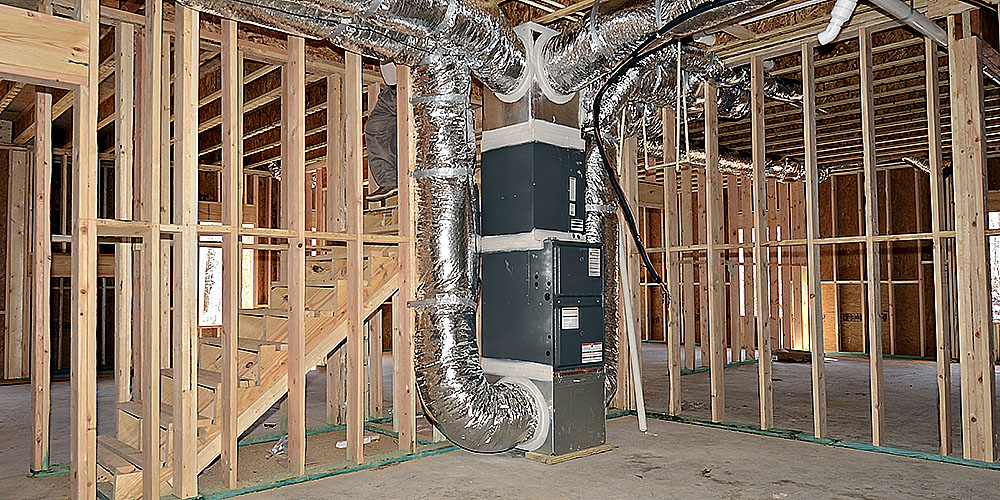In construction, concrete is one of the most vital building materials, offering strength, durability, and versatility. However, with various options for preparing concrete, choosing the right method can be overwhelming. For many projects, the choice often boils down to two options: on-site mixing and ready-mix concrete. Both methods have distinct benefits, and each is better suited for different kinds of projects and requirements. Knowing how to choose between the two can make a significant difference in a project’s timeline, budget, and quality. In recent years, concrete mix delivery services have become increasingly popular as they provide ready-made concrete tailored to meet specific project needs.
Understanding On-Site Mixing
On-site mixing involves creating concrete at the construction site using individual materials such as cement, sand, aggregate, and water. This method allows for total control over the mix, as workers can adjust the ingredients based on specific project requirements or changes in real-time. For example, if the weather changes or if the project specifications suddenly shift, the mix can be easily adapted without waiting on outside suppliers. This flexibility can be particularly advantageous for smaller projects, where the quantity of concrete needed may be less predictable.
On-site mixing also allows for adjustments in the concrete consistency as needed throughout the construction process. This aspect is important for projects requiring a very specific concrete consistency, or where the concrete must be poured in stages. With on-site mixing, construction crews can produce just the amount of concrete needed for each stage, minimizing the risk of waste and ensuring each layer is consistent.
However, on-site mixing has its challenges. It requires a skilled team, proper equipment, and significant time to complete, especially for large-scale projects. The quality of the concrete can vary depending on the experience of the workers and the equipment being used. Additionally, this method is typically slower than using ready-mix concrete for constructione, as every batch has to be mixed individually, which can be time-consuming and labor-intensive. For large projects, this can lead to delays and increased labor costs.
Ready-Mix Concrete and Its Advantages
Ready-mix concrete is manufactured in a central plant and delivered to the construction site in a ready-to-use state. Concrete mix delivery trucks transport the mix from the plant, ensuring that it arrives fresh and consistent for immediate application. This process allows concrete suppliers to control the mix’s quality precisely, as every batch is measured and mixed under controlled conditions using high-quality equipment. The central production of ready-mix concrete eliminates many variables that could compromise the mix’s quality, resulting in a more uniform product.
One of the key advantages of ready-mix concrete is time efficiency. The concrete arrives ready for use, meaning construction teams can begin pouring as soon as the delivery truck arrives. This feature can significantly reduce project timelines, which is especially important for large projects on tight schedules. In addition, because the mix is prepared by professionals in a controlled environment, there is less chance of errors related to proportions or consistency. Ready-mix concrete plants also often have strict quality control measures in place, which ensures that each batch meets the desired standards for strength, durability, and other performance characteristics.
Ready-mix concrete also minimizes the need for on-site equipment and storage. With on-site mixing, a variety of equipment, such as mixers and storage bins, is needed to keep and mix the raw materials. In contrast, ready-mix concrete does not require additional equipment or large storage space for materials on-site, which can be a considerable advantage for projects with limited space. Working with reputable ready mix concrete delivery Rockville ensures that the concrete is delivered precisely when and where it’s needed, offering a seamless, efficient solution for construction needs.
Cost Considerations: On-Site Mixing vs. Ready-Mix Concrete
Cost is often a significant factor in choosing between on-site mixing and ready-mix concrete. On-site mixing might appear more economical for small projects due to the flexibility and reduced transportation costs, as the materials can be brought in bulk. However, it’s important to consider the potential hidden costs associated with on-site mixing. Because on-site mixing is more labor-intensive and requires a skilled crew to achieve the correct mix, labor costs can quickly add up. Additionally, the need for equipment rental or purchase, as well as the risk of inconsistent batches leading to waste, can further increase expenses.
Ready-mix concrete, on the other hand, often has a higher upfront cost because it involves specialized manufacturing and transportation services. However, its time efficiency and consistency can lead to cost savings in the long run. When the concrete arrives ready to pour, projects can progress more quickly, reducing labor time and allowing teams to move on to other tasks sooner. This time savings can be especially beneficial for larger projects where time delays have a cumulative financial impact. By preventing wasted materials and reducing the need for labor, ready-mix concrete can be more cost-effective than on-site mixing, particularly for medium to large projects.
Environmental Impact of Ready-Mix vs. On-Site Mixing
Environmental considerations are increasingly influencing construction practices, and choosing between on-site mixing and ready-mix concrete can impact a project’s environmental footprint. Ready-mix concrete is often the more sustainable option because it is produced in centralized plants that employ efficient, large-scale mixing processes, which typically use energy and resources more effectively. Additionally, because ready-mix plants produce concrete in controlled conditions, they often minimize wastage by precisely measuring the materials, whereas on-site mixing can sometimes lead to excess material use or waste if the quantities are not accurately calculated.
On-site mixing can also lead to more emissions due to the on-site equipment needed, as well as potential spillage or waste during transport and mixing. Ready-mix concrete, transported directly in specialized trucks, reduces the need for heavy machinery at the site, which helps lower emissions and decrease the project’s carbon footprint. Furthermore, many ready-mix suppliers are now committed to using eco-friendly practices, such as recycling wastewater and optimizing energy use, to create a more sustainable product.
Choosing the Best Option for Your Project
Ultimately, choosing between on-site mixing and ready-mix concrete depends on the specific needs and constraints of your project. On-site mixing may be suitable for small or highly specialized projects where flexibility and small batch production are essential. It allows for on-the-spot adjustments and can be a good option if there are concerns about changing project requirements. However, it is generally slower and requires experienced personnel to ensure quality.
Ready-mix concrete, on the other hand, is ideal for projects that prioritize efficiency, consistency, and speed. Its precise production and controlled quality make it the preferred choice for larger construction projects or any work that requires high strength and durability. In addition, it reduces the need for on-site equipment and minimizes labor and potential waste, leading to significant cost savings over time.
By evaluating factors such as project size, budget, timeline, and environmental considerations, you can make an informed choice that aligns with your goals. Consulting with industry experts and considering the long-term benefits of each option can also help you achieve optimal results for your construction project.
Conclusion
Whether you opt for on-site mixing or ready-mix concrete, selecting a dependable concrete supplier is crucial to ensuring the quality of your material and the success of your project. Ready-mix concrete, in particular, requires a specialized provider who can deliver consistent quality and meet your timeline requirements. A trusted concrete supplier can advise you on the best mix for your needs, providing expertise that can make a substantial difference in your project’s outcome. By working with reliable concrete suppliers Silver Spring, you can rest assured that you’re receiving a quality product that enhances both the durability and efficiency of your construction project.


